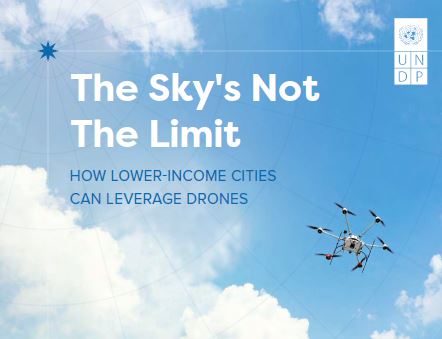
“The urban potential of UAVs, particularly for lower-income cities, is considerable,” according to a new report The Sky is Not the Limit from the United Nations Development Programme (UNDP). “Beyond refining public and private service delivery, UAVs could also accelerate broader sustainable development. From improving how cities leverage private sector innovation and collaboration, to shaping improvements in public contracting, and building digital and technical skills across the population. Lower-income cities should also recognise the worldwide infancy of all cities – both high- and low-income – in exploring the urban role of UAVs. These tools could provide an opportunity for lower-income cities to demonstrate global innovation leadership, and to shape the standards and potential of a key part of the Fourth Industrial Revolution.
According to one of the report contributors,UK delivery and drone services company Skyports: “Drone technology represents not just the bridging of physical distances, but also communities, disparities in education and innovation, and inequalities in diversity. As the industry comes into its own, we believe drone technology will play an important role in the pursuit of the UN’s Sustainable Development Goals”.
The company’s statement continues: “UAVs are playing an important role in last-mile service delivery around the world. However, COVID-19 has highlighted a potentially broader role that UAVs could play – in cities. Higher-income cities are exploring the technology, but there is little documentation of use cases or potential initiatives in a development context. This report provides practical and applied guidance to lower-income cities looking to explore how drones can support key urban objectives.”
The UNDP report’s executive summary says “This handbook moves beyond recreational use-cases and sets out the key priorities, considerations, policies, and interventions that cities need to engage with in order to drive larger-scale, professional, and sustainable UAV initiatives that achieve key urban objectives. This includes the potential ‘business models’ that cities may need to explore to shape investments in UAVs and related infrastructure. We call all of these components the urban UAV ‘stack’.
For more information
https://www.undp.org/publications/skys-not-limit-how-lower-income-cities-can-leverage-drones
(Image: UNDP)

